2008 Ski-Doo Freestyle Backcountry
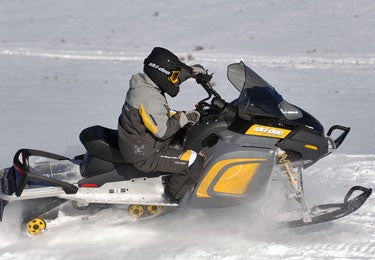
Back to boondocking basics
High-performance snowmobilers with their 150-plus horsepower machines often sneer at sleds like the moderately powered Ski-Doo Freestyle Backcountry. But in some conditions those riders should expect severe payback.
Engine Type:Horizontal In-line
Cylinders:2
Engine Stroke:2-Stroke
Valve Configuration:Reed Valve
Displacement:553.4 / 33.8
Starter:Pull
Turbocharged:No
View Full SpecThe Backcountry can probably get in—and out of—places where the only thing many short-tracked, high-performance sleds can get into is trouble!
Bearing a strong resemblance to the Ski-Doo Tundra, the Freestyle Backcountry is its sports-oriented cousin. To make the Backcountry, Ski-Doo combined about three of its RF-chassis models into one.
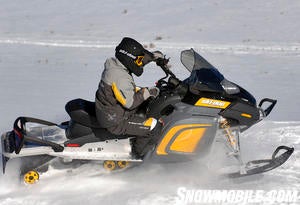 Deep snow is where you want to be aboard the Backcountry.
Deep snow is where you want to be aboard the Backcountry.
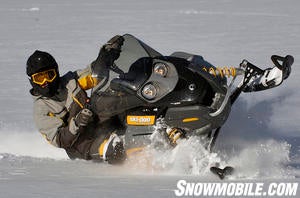 This sled comes with the goodies to play in open field and tight forests.
This sled comes with the goodies to play in open field and tight forests.
Borrowing Features
The RF chassis first found on the Freestyle is the building block for all of these models. To accommodate the 136-inch long track, engineers borrowed the SC-136 rear suspension from the Tundra. The wider 39-inch ski stance reflects the added stability of the Legend. Blend in a better shock package on the A-arm front suspension to control 6.3 inches of travel and you have the makings of a pretty good powder-busting sled.
Still, there’s another ingredient necessary to separate the Backcountry from its more plebian cousins—the addition of the Rotax 550cc fan-cooled twin. Faced with choices used in the RF-based models, Ski-Doo engineers could have stayed with the 269cc single cylinder engine found in the base Freestyle and Tundra. It’s not powerful enough to satisfy powder-bound riders. The V-800 4stroke is potent enough, but all that additional liquid-cooling and attendant weight is better suited for the touring Legend. So, split the difference with the lightweight, 57 hp Rotax series 552 fan-cooled twin. Its power at low end and midrange is well suited to a lightweight sled designed to break powder. It has proven reliability and durability, strengths for adventuring off the groomed snow highways. That is fitting since the main power in the MXZ 550 it comes with a certain sports legacy.
Practical Feature
Because the Backcountry is intended to plow snow, you’ll find it comes standard with a practical windshield. Where the MXZ is designed to look good on the showroom with its racy, low windscreen, the Backcountry must seem ready for powder. But a big windshield like those used on the Legend touring sleds are just too big and can actually get in the way when seesawing through deep snow. The mid-sized screen works well.
When you take the Backcountry off trail, you know that the 136-inch track with its 1.25-inch lug height will give you a solid footprint. The 15-inch track width allows you to lean the sled into the snow for maneuvering around buried logs and half-hidden stumps. Wide runningboards let you place both feet on one side as you grip the mountain strap to bank the sled over in the snow. This machine is very versatile and extremely nimble.
Power to Maneuver
A benefit of the somewhat moderate Backcountry’s power—by sports sled standards—is its ability to accept that power without inducing track slippage. Overpowering the track is the first step in getting a sled buried when boondocking. When you do get buried in snow, be glad that the Backcountry weighs in at just 435-pounds (dry).
On the trail, the Backcountry behaves like a slightly longer-tracked Freestyle Park model, which features more sports rider gear like a taller and straighter handlebar set, small windshield and short 121-inch track.
Ride on the Backcountry is better than average from this relatively low buck package (US$5,899). The front suspension comes stock with high-pressure gas shocks. To get up on the snow, the front end works with wide plastic skis.
Basic Drive
If you lift the hood, you’ll see a pyramidal style framework that allows the twin-cylinder two-stroke motor to sit low in the engine while maintaining structural rigidity. Opening the side panel to get at the drive belt reveals a proven Bombardier Lite drive clutch. This unit has been around snowmobiling for many years in a number of guises. Securistat popularized the basic design in the 1970s when it was known simply as the PowerBloc clutch. Using a series of plastic blocks, the clutch is easily adjusted and ideally suited to the power of engines like the 550 twin. That basic simplicity has been refined into the Bombardier Lite where it can be found on low to moderately powered Ski-Doo models.
Don’t let the drivetrain’s overt simplicity fool you. The power delivery is smooth and transitions perfectly when picking your way through undeveloped snow country. This combination of fan-cooled power with lightweight is a plus when boondocking. You can stand on the runningboards, place a foot on the rear cargo rack, grab the mountain strap and slalom the sled around the forest. Ski-Doo’s Backcountry proves that you don’t have to go fast to enjoy snowmobiling. You do need to be agile and quick thinking to play in the powder, but that’s the fun of this sled.
If you do make a mistake, you might be able to ride it out. Or maybe you can engage the Backcountry’s electronic reverse and back out of your error.
Adventure Riding
The boondocking Backcountry comes in a choice of colors, traditional Ski-Doo black and yellow or a white and red combination. Electric start is an option, but the 550 fan-cooled twin has proven to be a reliable and easy starting motor. You can always add electric start later.
You might like to add a tachometer, though. A speedometer is the only standard instrument.
Also standard with the Ski-Doo Backcountry is a fresh sense of adventure. Yes, you can ride the groomed trails. But you can also stray from the trail and poke around those ungroomed areas as well. We bet that’s where most 2008 Backcountry riders will head.



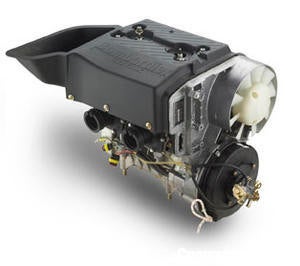
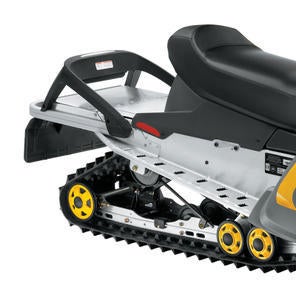
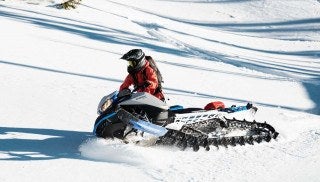

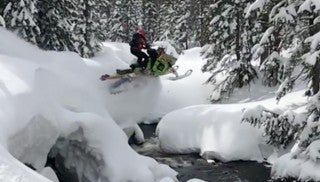


 Your Privacy Choices
Your Privacy Choices